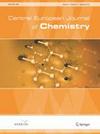Surface plasmon resonance imaging biosensors for aromatase based on a potent inhibitor and a specific antibody: Sensor development and application for biological material
引用次数: 26
Abstract
AbstractAromatase (ARO) is an enzyme with potential diagnostic significance. Aberrant expression of aromatase in tissues is associated with a number of pathological conditions, including tumor of the breast, ovary, testes, liver, adrenal cortex and uterus, as well as endometriosis.Two methods for the highly selective determination of ARO concentration in human tissues by using of two different biosensors co-operating with the surface plasmon resonance imaging technique (SPRI) have been developed. One of the developed biosensors contains immobilised rabbit polyclonal antibody specific for aromatase (Y-ARO), while the other contains immobilized ARO inhibitor-exemestane (E-ARO). Both biosensors specifically bound ARO from analyzed samples. The analytically useful dynamic response range of both biosensors is between 0.3 and 5.0 ng mL−1. The detection limit (3S.D.) of both biosensors is 90 pg mL−1. Standard deviation of both biosensors is 1%. Recoveries of ARO spikes are between 97 and 108% for both biosensors under model conditions and for real samples. Albumin and alkaline phosphatase are tolerated for both biosensors up to 10,000 fold excess.基于有效抑制剂和特异性抗体的芳香化酶表面等离子体共振成像生物传感器:生物材料传感器的开发与应用
摘要:纤维素酶(ARO)是一种具有潜在诊断意义的酶。芳香化酶在组织中的异常表达与许多病理状况有关,包括乳腺、卵巢、睾丸、肝脏、肾上腺皮质和子宫的肿瘤,以及子宫内膜异位症。利用两种不同的生物传感器与表面等离子体共振成像技术(SPRI)合作,开发了两种高选择性测定人体组织中ARO浓度的方法。其中一种生物传感器含有固定化兔特异性芳香化酶多克隆抗体(Y-ARO),另一种生物传感器含有固定化芳香化酶抑制剂依西美坦(E-ARO)。这两种生物传感器都能从分析的样品中特异性地结合ARO。两种生物传感器的分析有用的动态响应范围在0.3和5.0 ng mL−1之间。两种生物传感器的检测限(3sd)均为90 pg mL−1。两种生物传感器的标准偏差均为1%。在模型条件下和实际样品中,生物传感器的ARO峰值回收率在97 - 108%之间。白蛋白和碱性磷酸酶对这两种生物传感器的耐受性高达10,000倍。
本文章由计算机程序翻译,如有差异,请以英文原文为准。
求助全文
约1分钟内获得全文
求助全文

 求助内容:
求助内容: 应助结果提醒方式:
应助结果提醒方式:


